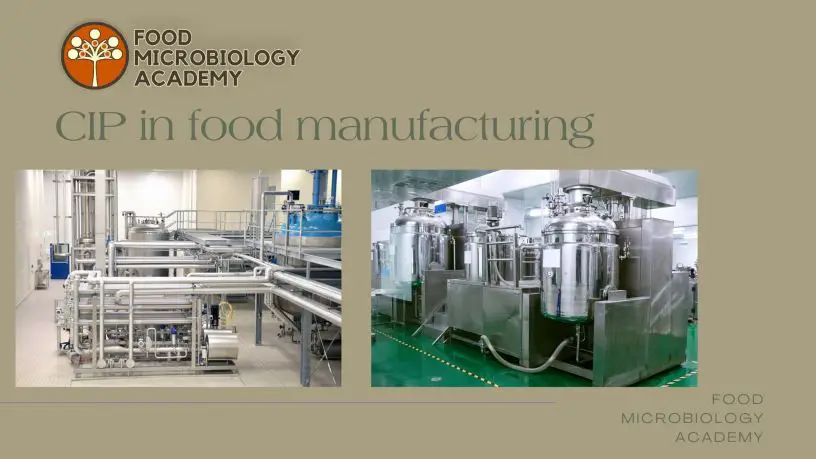Introduction
In the world of food manufacturing, ensuring product safety and quality is of paramount importance. One key process that plays a critical role in achieving these goals is Cleaning in Place (CIP). CIP is a sophisticated, automated system used to clean and sanitise equipment and pipelines without disassembling them. It has revolutionised the food industry by significantly reducing downtime, minimising cross-contamination risks, and enhancing overall efficiency. This article explores the use of CIP in food manufacturing, its components, benefits, challenges, and best practices.
Understanding Cleaning in Place (CIP)
Cleaning in Place (CIP) is a cleaning and sanitisation method designed to remove residues, contaminants, and microorganisms from equipment, pipes, and vessels used in food manufacturing. This process is essential for maintaining food safety, product quality, and consistency. Unlike traditional cleaning methods, CIP eliminates the need for manually disassembling equipment, reducing production downtime and the risk of contamination.
Components of a CIP System
A typical CIP system consists of several key components, each playing a crucial role in the cleaning process:
- Cleaning Agents: Chemical solutions specifically formulated to break down and remove various types of residues, including fats, proteins, and minerals.
- Rinse Water: Clean water used to rinse equipment after the cleaning cycle, ensuring all cleaning agents and contaminants are thoroughly removed.
- Pumps and Valves: These components circulate cleaning solutions and rinse water through the system, controlling flow rates and pressures.
- Heat Exchangers: Used to heat cleaning solutions to the appropriate temperature for optimal cleaning effectiveness.
- Control Systems: Automation and control systems manage the timing, temperature, flow rates, and sequence of CIP cycles, providing precise control over the cleaning process.
The Cleaning Process
CIP involves a series of carefully orchestrated steps to ensure thorough cleaning and sanitisation of equipment and pipelines. While specific procedures may vary depending on the equipment and product, the general cleaning process includes the following steps:
- Pre-Rinse: Cold or lukewarm water is used to remove loose dirt and debris from the equipment.
- Cleaning: A cleaning solution, chosen based on the type of residue to be removed, is circulated through the equipment. This solution breaks down and loosens residues.
- Post-Rinse: Clean water is used to flush out any remaining cleaning solution and residues, leaving the equipment free from chemicals.
- Sanitisation (Optional): In some cases, a sanitisation step follows to eliminate any remaining microorganisms, ensuring equipment is microbiologically clean.
Automation and Monitoring
One of the most significant advantages of CIP is its high level of automation. CIP systems can be precisely programmed to follow standardised cleaning protocols, ensuring consistent results and reducing the margin for human error. Sensors and monitoring devices continuously measure parameters such as temperature, flow rates, and chemical concentrations to guarantee the cleaning process’s effectiveness.
Benefits of CIP in Food Manufacturing
The implementation of CIP in food manufacturing offers numerous advantages, making it a preferred choice for many manufacturers:
- Efficiency: CIP reduces downtime associated with manual cleaning, enabling continuous production and increased throughput.
- Consistency: Automated CIP systems ensure that cleaning and sanitisation processes are consistently executed to predefined standards, minimising the risk of human error.
- Safety: CIP minimises the exposure of workers to potentially hazardous chemicals and hot water used in cleaning, enhancing workplace safety.
- Cross-Contamination Prevention: The automated nature of CIP reduces the risk of cross-contamination between batches of different products, ensuring product quality and safety.
Challenges and Considerations
While CIP offers significant benefits, it is not without its challenges and considerations:
- Complexity: CIP systems can be complex to design, install, and maintain, requiring skilled personnel and proper training.
- Resource Consumption: CIP processes can consume significant amounts of water, energy, and cleaning chemicals. Proper resource management is essential to minimise environmental impact.
- Validation and Documentation: Many industries require thorough validation and documentation of CIP processes to demonstrate compliance with regulatory standards and quality control. This documentation adds an additional layer of complexity.
- Chemical Compatibility: Careful selection of cleaning agents is crucial to ensure compatibility with the equipment and the product being processed.
Best Practices for Effective CIP
To ensure the effective use of CIP in food manufacturing, consider the following best practices:
- Regular Maintenance: Routine maintenance and inspections of CIP equipment are essential to prevent breakdowns and ensure system reliability.
- Thorough Training: Adequate training of personnel responsible for operating and maintaining CIP systems is critical to successful implementation.
- Resource Management: Implement resource-saving measures, such as water recycling and energy-efficient heating systems, to reduce environmental impact.
- Documentation: Maintain detailed records of CIP cycles, including parameters, results, and any deviations from standard procedures. This documentation is essential for quality control and regulatory compliance.
Conclusion
Cleaning in Place (CIP) is a crucial process in food manufacturing, enabling efficient and effective cleaning and sanitisation of equipment and pipelines. Its automation, precision, and reliability make it a cornerstone of food safety and product quality. While challenges exist, proper design, maintenance, and training can help manufacturers harness the full potential of CIP, ensuring the safety and integrity of the food products they produce. As the food industry continues to evolve, CIP remains a cornerstone of ensuring safety and product quality in an increasingly complex and demanding manufacturing environment.

